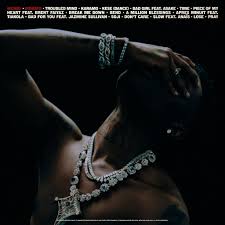Tyler, The Creator recently has achieved his first UK number one album with Chromakopia, despite it being available for only four days within the week’s chart tracking period. Typically, the Official Chart Company begins counting sales and streams each Friday at 00:01 when most major label projects are released.
However, true to his nonconformist approach, Tyler released Chromakopia on Monday at 06:00 EST, three days after the week’s tracking began. This unconventional timing reflects his stance that weekday releases may engage listeners more effectively during commutes or work hours when they’re more likely to pay close attention to new music.
Tyler has long argued that music released during the week can be appreciated with greater focus, while weekend listening often occurs in more passive settings, such as parties or background relaxation. In a conversation with Canadian music journalist Nardwuar, Tyler emphasized that weekday releases provide an opportunity for audiences to engage deeply with music, rather than passively as it often happens on weekends.
While acknowledging that this strategy might cost him half the week’s streams and sales, Tyler remains committed to his philosophy of ensuring listeners have an immersive experience.
Previously, music releases in the UK occurred on Mondays, allowing the full week for listeners to absorb new material before charts were updated on Sunday evenings. However, in 2015, the music industry adopted a Friday release strategy in over 45 countries as part of a global “New Music Fridays” initiative, designed to align with consumer habits showing a preference for weekend listening.
This strategy sought to capitalize on people’s increased free time during weekends to engage with new music, which some believe encourages more casual, if not superficial, listening.
Music chart analyst Chris Molanphy agrees with Tyler’s stance, noting that the music industry’s shift to Fridays may have unintentionally pitted music releases against weekend entertainment like film releases. He argues that competing with movies, traditionally released on Fridays, may hinder music’s distinct positioning.
Despite the dominance of streaming, album downloads and physical sales still play a significant role in determining an album’s chart success due to their weighted contribution, giving Tyler’s choice of a Monday release an edge for die-hard fans who might purchase physical copies immediately.
In addition to streaming, Tyler’s marketing acumen plays a vital role in his chart success. His website offers multiple vinyl editions of Chromakopia, bundled with unique merchandise that draws fans who value collectible art. Molanphy praised Tyler as a “marketing genius,” noting his skill in designing visually compelling album covers.
This attention to detail aligns with data showing that about half of vinyl consumers don’t own record players, indicating that album art has a major appeal beyond the music itself. Tyler’s 2019 album Igor, known for its memorable pink cover, remained on the Billboard vinyl chart for an impressive 160 weeks.
Having previously won two Grammy awards for Best Rap Album and reaching the UK’s top 10 with four albums, Tyler has built a reputation for quality and innovation in both music and presentation. Despite this, not everyone views Chromakopia‘s Monday release strategy as a positive innovation.
Music business journalist Eamonn Forde labeled it a “marketing gimmick,” arguing that the key to chart success in the streaming era lies in maximizing streams throughout the full week. Forde emphasized that each minute counts toward building momentum for the charts, and releasing an album halfway through the week might hinder an artist’s chart impact.
However, others in the industry recognize that hip-hop has a tradition of experimenting with unique sales strategies. Molanphy notes that while Tyler’s Monday release might inspire other artists, the approach may not suit everyone.
Tyler’s influence and brand strength allow him to experiment in ways that might not work as effectively for others, underscoring the unique place he holds within the industry. His success with Chromakopia illustrates his enduring ability to connect with fans and attract widespread acclaim even through unconventional methods.
Meanwhile, on the singles chart, Gigi Perez’s Sailor Song claimed the number one spot, ending Sabrina Carpenter’s nine-week streak with her hit Taste. This chart development highlights the dynamic nature of the music industry, where artists continuously adapt and innovate to capture listeners’ attention and stay at the forefront.










